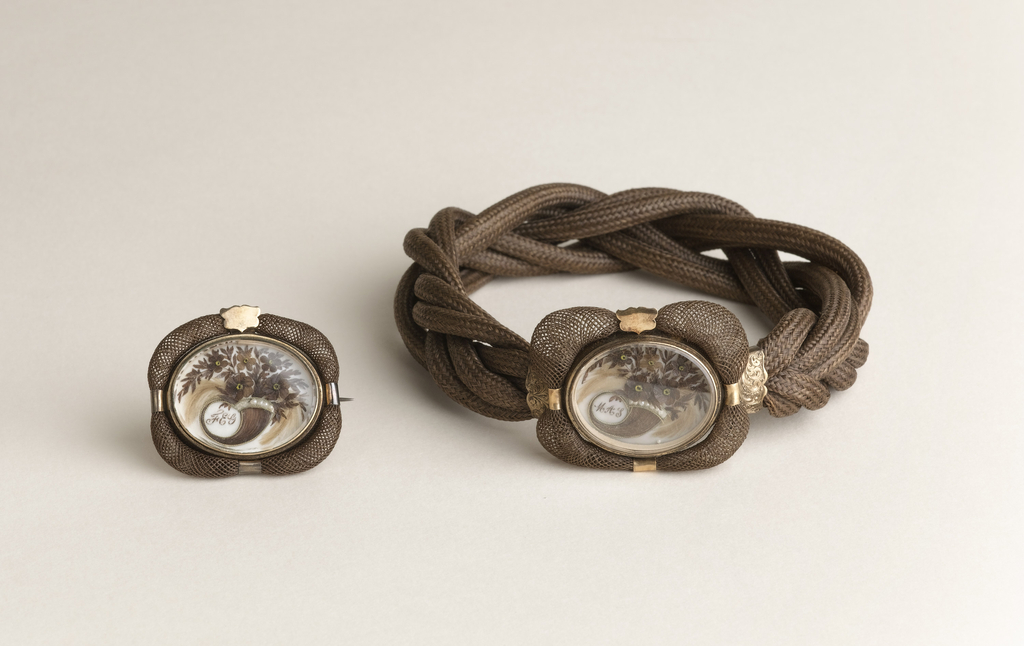In the genteel Victorian parlor, fashionable women participated in various leisurely pursuits, like making needlework and playing musical instruments. In what today is a more unusual activity, women transformed the hair of a loved one—either deceased or living—into a picture to be hung on the wall or into a piece of jewelry to be worn. Although hair work in England existed as early as the seventeenth century, it expanded in the nineteenth century as one of the many mourning customs women practiced. The brooch and matching bracelet in the Cooper-Hewitt collection are probably examples of mourning hair work jewelry.
Hair work mourning jewelry served as a sentimental and tangible memorial to the deceased. In the late 1700s, hair work started to become professionalized, but tradesmen were soon deemed untrustworthy. Customers would send the hair of a loved one by mail, expecting it to be returned worked into a piece of jewelry. Instead, some tradesmen returned pre-made pieces containing anonymous hair, either for ease or because they broke the original locks. Some makers even replaced human hair with sturdier horsehair—leaving the jewelry with none of the sentimental attachment Victorian women coveted.
To combat such deceitful practices, articles and books were published to instruct women how to make hair work jewelry in their own homes, encouraging the practice as a domestic art and re-instilling its immaterial value. The Lock of Hair, published in London in 1872, became hugely successful across England while Mark Campbell's 1867 Self-Instructor in the Art of Hair Work popularized the craft in the US. Such guidebooks described how to work the hair into differently patterned chains, braids, and pictures, and illustrated preferred shapes, including one matching the Cooper-Hewitt’s brooch and bracelet ornament. Although the jewelry was intended to serve as a tangible remembrance of an individual, undoubtedly many women wore nearly identical pieces, as they followed published instructions or chose designs from tradesmen’s books.
Throughout the nineteenth century, mourning customs flourished, but by the last decades of the nineteenth century, the particular practice of hair jewelry fizzled out. Today, surviving pieces continue to be that tangible reminder of a deceased person, but they also remember a lost Victorian sentimental culture when wearing someone else’s hair as ornament was not only normal, but highly valued, and a mark of a genteel, sentimental woman.
Rebecca McNamara is a Master's student in the history of decorative arts and design and a freelance writer, editor, and researcher, specializing in nineteenth- and twentieth-century design and material culture. She is based in New York.

3 thoughts on “Precious Jewelry of Hair: A Brooch and Bracelet Set for Mourning”
Lucy Cadwallader on March 30, 2016 at 8:18 pm
Other than the Mark Campbell Book of hair art/weaving, are you aware of any other publications which would have table woven patterns?
Lisa Lechtenberg on March 22, 2021 at 3:22 pm
how can i order a mourning bracelet using my own hair
Sher on January 18, 2022 at 5:15 pm
Have you tried the Victorian Hair Workers International?